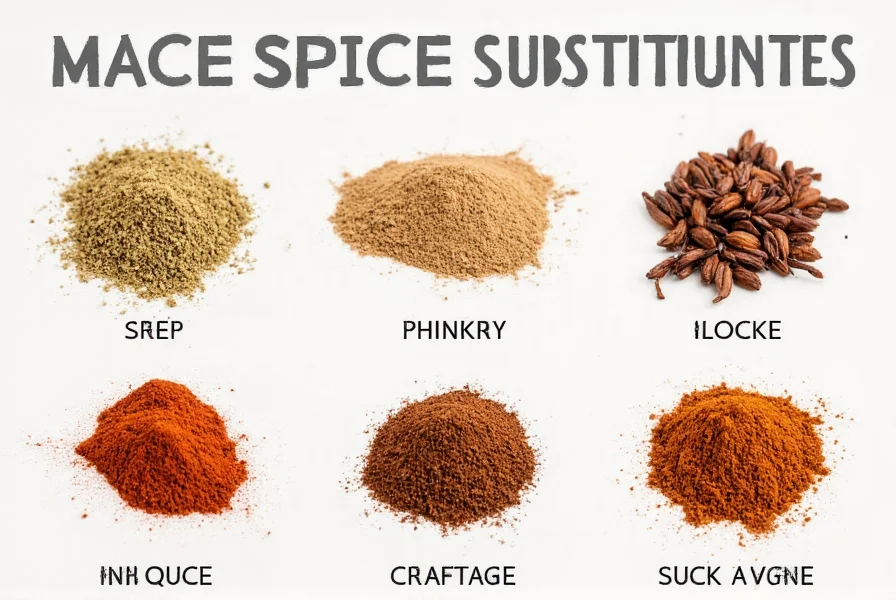
When you need a ground mace substitute, nutmeg is the closest option (use half the amount), but allspice, cinnamon, ginger, cloves, paprika, or a mixed spice blend can work too. Here's a quick reference guide with exact ratios and usage tips for every recipe.
Table of Contents
- What Is Ground Mace?
- Why Substitute Ground Mace?
- Top 7 Ground Mace Substitutes
- Flavor Comparison Table
- How to Use Each Substitute
- Buying Guide
- Frequently Asked Questions
- Conclusion
What Is Ground Mace?
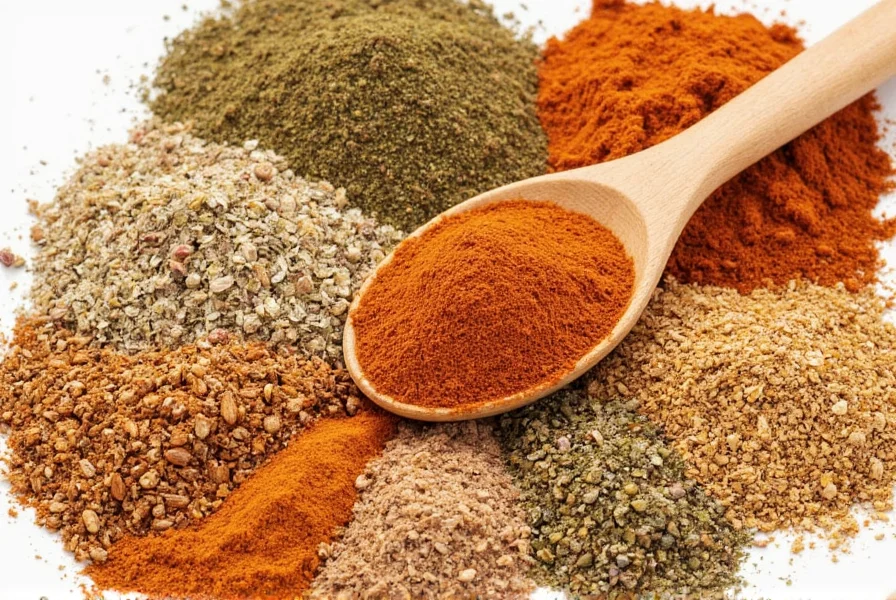
Mace comes from the same plant as nutmeg — Myristica fragrans. While nutmeg is the seed inside the fruit, mace is the reddish lacy covering (called aril) that surrounds the seed. Once dried, it's ground into a fine powder known as ground mace.
This spice has a warm, slightly sweet profile with hints of pepper and clove. Compared to nutmeg, mace tends to be more subtle and refined, which makes it a popular choice in baked goods, custards, creamy sauces, and spiced meats.
Why Substitute Ground Mace?
You might find yourself asking, "Can I skip mace altogether?" Well, yes… but maybe not if you want to preserve the dish's intended flavor. Here are some common reasons to reach for a substitute:
- Unavailability: Not every grocery store stocks mace regularly.
- Allergies or sensitivities: Some people may react negatively to mace or nutmeg due to myristicin content.
- Dietary preferences: Vegans or those avoiding specific spices might seek alternatives.
- Budget constraints: Ground mace can be pricey compared to its cousins.
Top 7 Ground Mace Substitutes
Here are seven solid substitutes that can mimic mace's flavor in various dishes. Let's break them down one by one.
- Nutmeg
- Allspice
- Cinnamon
- Ginger
- Cloves
- Paprika (for color and mild flavor)
- Mixed spice blend
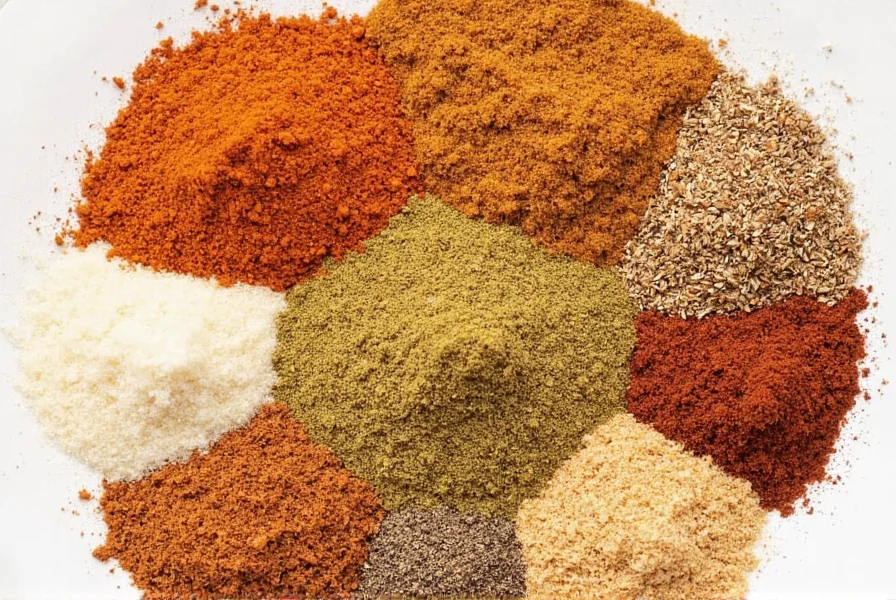
Flavor Comparison Table
| Substitute | Flavor Profile | Best For | Notes |
|---|---|---|---|
| Nutmeg | Earthy, sweet, nutty | Baking, custards, cream-based dishes | Use sparingly; stronger than mace |
| Allspice | Peppery, clove-like, mildly sweet | Meat rubs, stews, pies | Good balance of warmth and sweetness |
| Cinnamon | Sweet, woody, aromatic | Breads, desserts, oatmeal | Lacks mace's complexity but works in a pinch |
| Ginger | Spicy, citrusy, earthy | Asian cuisine, cookies, marinades | Adds heat, not sweetness |
| Cloves | Strong, bitter-sweet, pungent | Ham glazes, mulled drinks, spice blends | Very potent; use 1/3 the amount |
| Paprika | Mild, slightly sweet, earthy | Color boost in savory dishes | Mainly for appearance, minimal flavor replacement |
| Mixed spice blend | Varies (often includes cinnamon, coriander, caraway) | Baked goods, puddings, holiday recipes | Great for complexity without guessing individual ratios |
How to Use Each Substitute
Now that we know what each alternative brings to the table, let's explore how to incorporate them properly into your cooking or baking routine.
1. Nutmeg
Ratio: Use about half the amount of nutmeg compared to mace since it's more intense.
Best in: Custards, eggnog, pumpkin pie filling, béchamel sauce.
Tips: Freshly grated nutmeg offers a more vibrant flavor than pre-ground. If you only have pre-ground, store it tightly sealed to maintain potency.
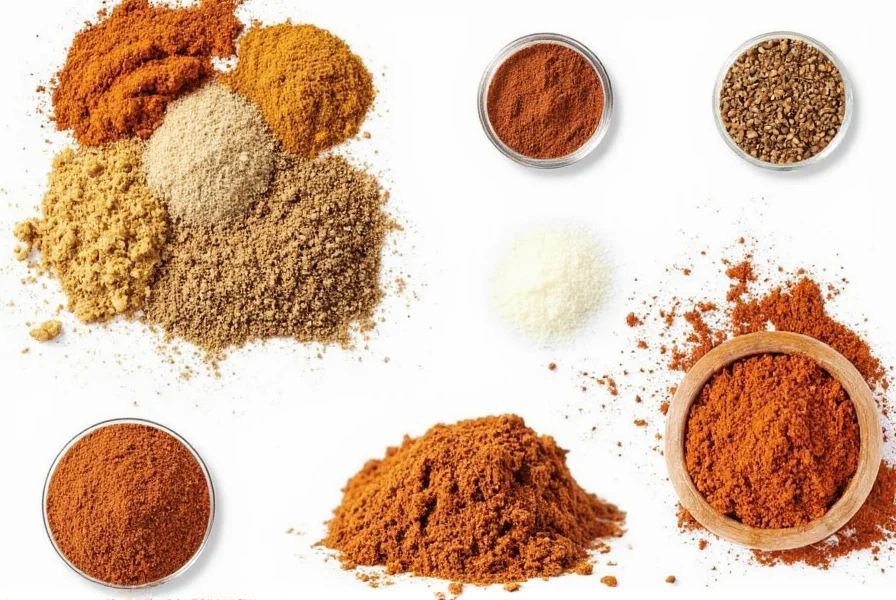
2. Allspice
Ratio: Equal parts allspice to mace (or reduce by 10–20% if unsure).
Best in: Jamaican jerk seasoning, apple pie, gingerbread cookies, meat marinades.
Tips: Whole allspice berries last longer and can be ground at home for maximum aroma.
3. Cinnamon
Ratio: Use equal amounts, but consider blending with a dash of cloves or nutmeg for added depth.
Best in: Baked apples, rice pudding, hot chocolate, chai tea.
Tips: Ceylon cinnamon is often considered superior to cassia, offering a smoother, sweeter taste.
4. Ginger
Ratio: Use half the quantity of fresh grated ginger or 1/3 powdered ginger.
Best in: Stir-fries, gingerbread, Asian soups, pickling brines.
Tips: Powdered ginger is much stronger than fresh, so adjust accordingly.
5. Cloves
Ratio: Use 1/3 of the original mace amount — very potent!
Best in: Ham glaze, mulled wine, spiced cakes, chai latte mix.
Tips: Remove whole cloves before serving, especially in liquid dishes.
6. Paprika
Ratio: Equal part paprika for visual effect only.
Best in: Sauces, gravies, goulash, potato salad.
Tips: Smoked paprika adds a nice twist to savory dishes where mace was used primarily for color.
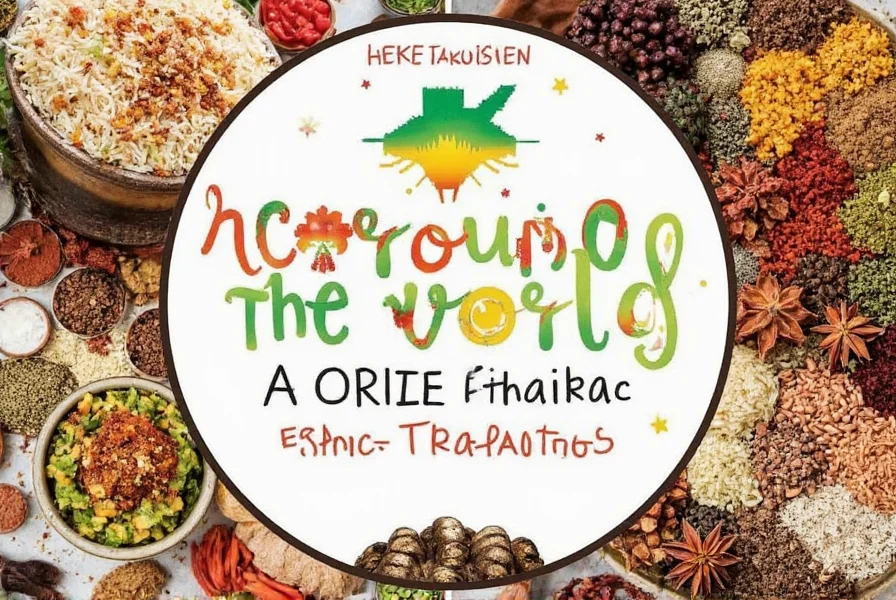
7. Mixed Spice Blend
Ratio: Start with ¾ of the required mace amount, adjust to taste.
Best in: Christmas cake, steamed puddings, brioche, mince pies.
Tips: Commercial mixed spice blends vary, so read labels carefully or make your own for better control over flavor.
Buying Guide
Choosing the right substitute isn't just about flavor — it also depends on quality, shelf life, and usage context. Here's a quick buyer's guide to help you pick wisely.
1. Nutmeg
- Features: Earthy, warm, subtly sweet
- Advantages: Widely available, affordable, long shelf life
- Use Cases: Desserts, dairy-based sauces, holiday drinks
- Target Audience: Home bakers, dessert lovers, coffee connoisseurs
- Suitable Occasions: Holiday baking, brunch spreads, mulled cider
2. Allspice
- Features: Complex blend of cinnamon, nutmeg, and clove notes
- Advantages: Great for spice blends, bold flavor impact
- Use Cases: Jerk seasoning, meat rubs, fall-inspired pies
- Target Audience: Caribbean cuisine fans, grill enthusiasts
- Suitable Occasions: Summer grilling, autumnal desserts, holiday roasts
3. Cinnamon
- Features: Sweet, woody, versatile
- Advantages: Available everywhere, budget-friendly, health benefits
- Use Cases: Breakfast bowls, oatmeal, cookies, toast toppings
- Target Audience: Everyday cooks, health-focused individuals
- Suitable Occasions: Morning routines, school snacks, family dinners
4. Ginger
- Features: Spicy, zesty, sharp
- Advantages: Can be used fresh, dried, or powdered
- Use Cases: Tea, stir-fries, marinades, cookies
- Target Audience: Health-conscious consumers, adventurous eaters
- Suitable Occasions: Winter meals, wellness rituals, spicy snacks
5. Cloves
- Features: Intense, bitter-sweet, medicinal edge
- Advantages: Long shelf life, powerful punch
- Use Cases: Glazed hams, mulled wine, potpourri
- Target Audience: Seasonal bakers, herbalists
- Suitable Occasions: Holidays, DIY projects, festive gatherings
Frequently Asked Questions
What is the closest substitute for ground mace?
Nutmeg is the closest substitute since it comes from the same plant as mace (just a different part). However, nutmeg is stronger and more intense than mace, so use about half the amount. For a more balanced substitute, try a small blend of nutmeg and allspice (1 part nutmeg to 2 parts allspice) to better mimic mace's delicate flavor profile.
Can I use nutmeg instead of ground mace?
Yes, nutmeg is the most direct substitute for ground mace since they come from the same plant. Just remember that nutmeg has a stronger, more robust flavor than mace, so use only about half the amount called for in your recipe. Freshly grated nutmeg works best for optimal flavor when substituting for mace.
How much nutmeg equals ground mace?
Use a 1:2 ratio of nutmeg to mace. For every 1 teaspoon of ground mace required, substitute with ½ teaspoon of ground nutmeg. If using freshly grated nutmeg, you might need slightly less (about 1/3 teaspoon) since it's more potent. Always start with less and taste as you go, adding more if needed.
Is mace stronger than nutmeg?
No, actually nutmeg is stronger than mace. Mace has a more delicate, refined flavor profile that's slightly sweeter and more subtle than nutmeg. This is why when substituting nutmeg for mace, you need to use less nutmeg to avoid overwhelming your dish with too much intensity. Think of mace as the more refined cousin of nutmeg.
What's the difference between mace and nutmeg?
Both come from the Myristica fragrans tree. Nutmeg is the seed inside the fruit, while mace is the reddish lacy covering (aril) that surrounds the seed. Mace has a more delicate, slightly sweet flavor with citrus notes, while nutmeg is earthier, stronger, and more robust. Visually, ground mace is orange-yellow, while nutmeg is brown. Mace is typically more expensive because it takes more of the aril to produce the same amount of spice.
Can I omit mace from a recipe?
You can omit mace, but it may affect the final flavor profile of your dish, especially in recipes where it plays a key role (like béchamel sauce, certain baked goods, or spiced meats). Mace adds a subtle warmth and complexity that's hard to replicate exactly. If you must omit it, consider adding a small pinch of allspice or a blend of cinnamon and nutmeg to maintain some depth of flavor.
Why is mace more expensive than nutmeg?
Mace is more expensive because it's more labor-intensive to harvest. Each nutmeg seed produces only one piece of mace, and the aril must be carefully removed, dried, and processed. It takes approximately 15-20 mace arils to produce the same weight as one nutmeg seed. Additionally, mace has a shorter shelf life than nutmeg, which affects pricing. The more delicate flavor profile also makes it a specialty item for certain recipes.
Can I make my own mace substitute blend?
Yes! A good homemade mace substitute blend is: 2 parts allspice, 1 part nutmeg, and a tiny pinch of ground cloves. For every 1 teaspoon of mace needed, use ¾ teaspoon of this blend. This combination captures mace's warm, slightly sweet profile with its subtle peppery notes. For savory dishes, you might want to reduce or eliminate the cloves from the blend.
Conclusion
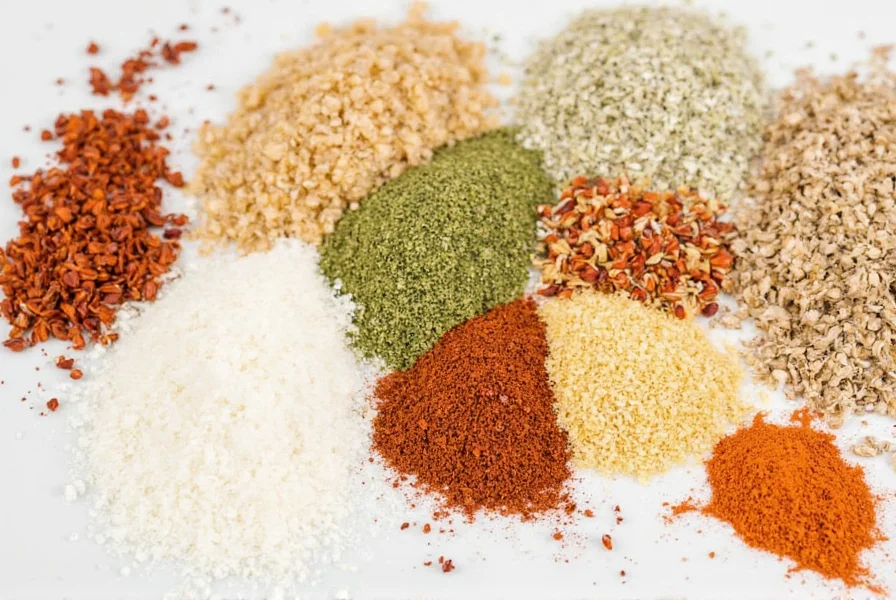
When it comes to replacing ground mace spice, you've got options — and now you've got the knowledge to choose wisely. Whether you opt for nutmeg's warm sweetness, allspice's balanced boldness, or cinnamon's familiar comfort, each substitute brings something special to the table.
Remember, mace is delicate — so your replacement should aim for subtlety rather than intensity. Taste as you go, start small, and don't be afraid to experiment. After all, cooking is all about creativity and discovery.
Got a favorite mace substitute we didn't mention? Drop it in the comments below — let's keep the spice train rolling together!

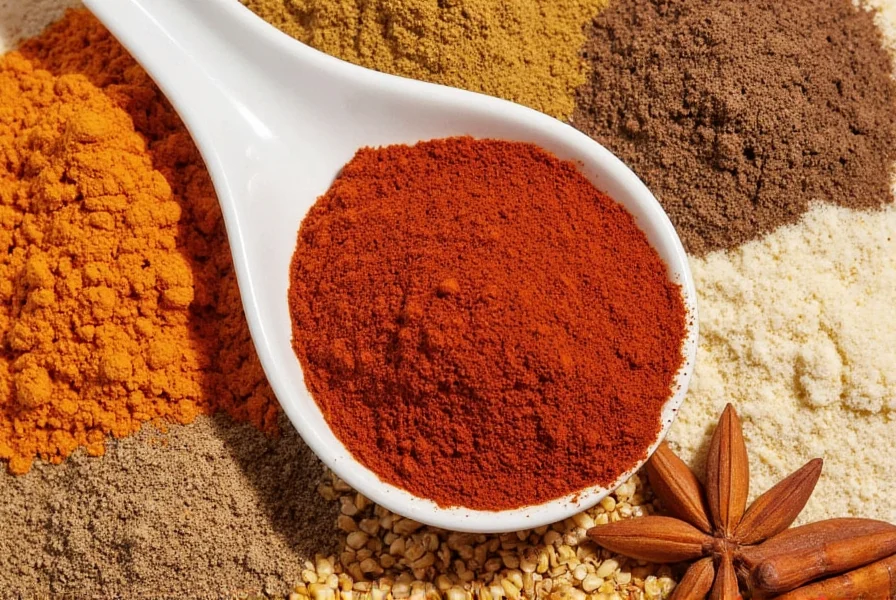









 浙公网安备
33010002000092号
浙公网安备
33010002000092号 浙B2-20120091-4
浙B2-20120091-4